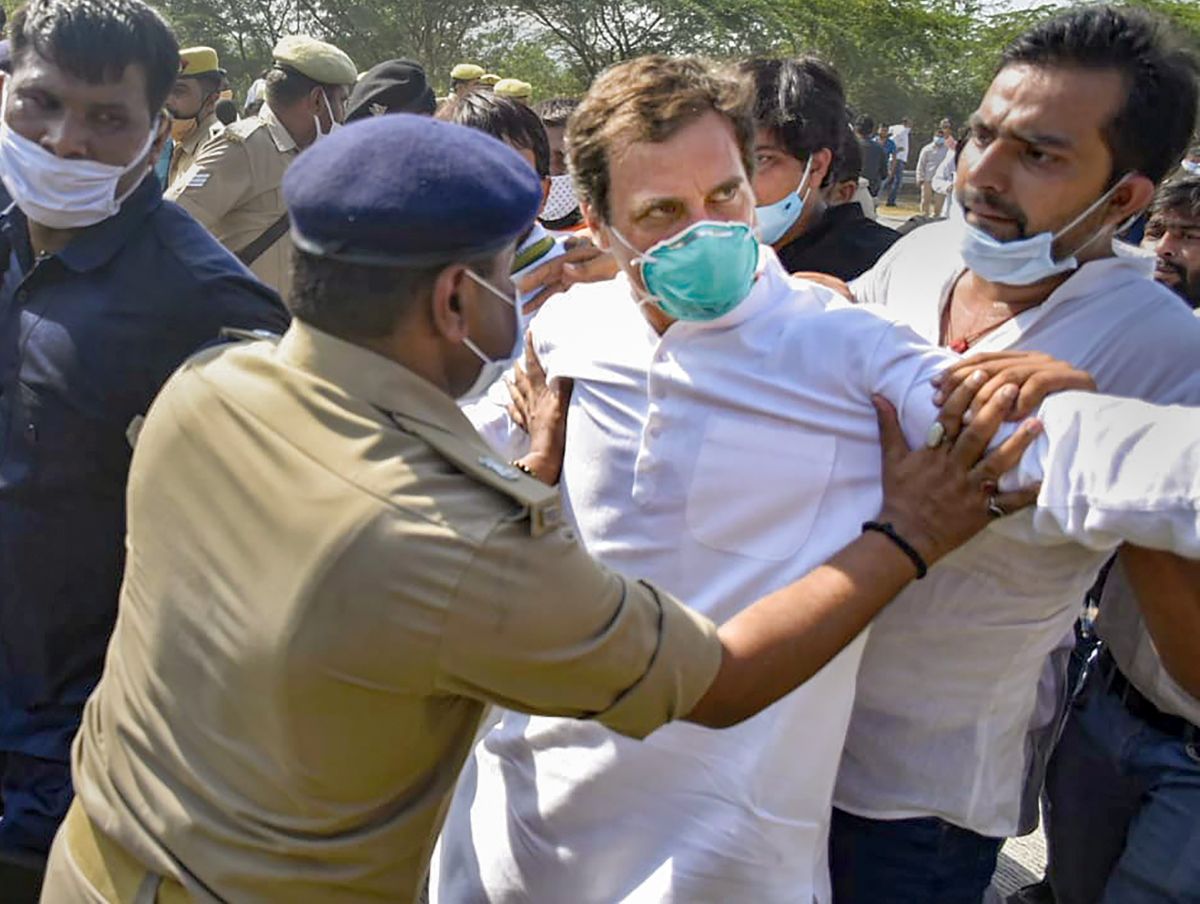Three important issues have apparently united the principal Opposition parties, with the Congress adopting an aggressive stance to strive for its revival on the national political stage. Perception is imperative in public life, and for the first time, in many years, the BJP appears to be on a shaky wicket. By not allowing a division of votes to take place on the farm bills in the Rajya Sabha, the ruling party, which has a comfortable majority in both Houses, needlessly infringed on the accepted norms of Parliament.
Senior members of the government publicly denounced the Opposition MPs for violating the code of conduct and disrupting the proceedings, while simultaneously defending the arbitrary decision of the Rajya Sabha Deputy Chairman. However, the Rajya Sabha TV footage clearly revealed that this was not how things unfolded. The denial of seeking a division and passing the bills in a tearing hurry, has ignited agitation in some states, particularly Punjab and Haryana, where farmers have marched on to the streets to protest against the new Act.
Similarly, the verdict of the Special CBI court, acquitting all the accused in the Babri Masjid demolition case, while observing that the act of destruction was not pre-planned, has cast serious doubts over the probe by the country’s premier investigating agency. The judge noted that the CBI had been unable to furnish evidence to prove the conspiracy theory.
The Apex Court, on the other hand, had described the demolition as a criminal act but the way matters stand, no one has been held accountable for the 6 December 1992 incident, which subsequently led to countrywide protests and violence in several cities, primarily, Mumbai. The short point being that the demolition could not have taken place without an organised and well-thought through strategy, and it is obvious that if the leaders who have been acquitted were not a part of it, some others surely were. In the interest of justice, these persons should have been identified and punished.
There were intelligence reports that such an obliteration was possible, but both the Kalyan Singh government in Uttar Pradesh, and the P.V. Narasimha Rao dispensation in New Delhi did not take preventive steps. Prime Minister Rao had also been forewarned by his political colleagues, including Arjun Singh and Makhan Lal Fotedar, that some machinations were afoot in Ayodhya and pre-emptive measures were the call of the hour.
What, however, is plausible is that senior leaders like Lal Krishna Advani and Murli Manohar Joshi, who were present at Ayodhya on that fateful day, may have been unaware of the brewing conspiracy, the handiwork of some chosen kar sevaks, prodded by unnamed Hindutva elements. The judgement has created an impression that it lacked the required legal gravitas, which of course, may become a matter for legal luminaries to battle in the higher courts of the land.
The most significant issue that has, by no means, not gone down well with the average citizen, including several supporters of the BJP, is the impetuous way in which the Uttar Pradesh government has dealt with the Hathras gangrape and murder case. The investigation and the alleged cover-up are in itself questionable, but the administration has allowed the Opposition parties to openly challenge the Adityanath regime’s ability to safeguard women, as well as uphold law and order.
The Congress, which has been facing one crisis after the other, having yet to resolve its own internal squabbles, has suddenly come alive. In fact, Rahul Gandhi’s pro-active role in leading a protest march on the Expressway, has invigorated Congress workers to take to the streets. There are many veteran party activists who have been drawing a parallel between Rahul being pushed to the ground in Uttar Pradesh and the 1979 incident on New Delhi’s Janpath, when Sanjay Gandhi was lathi-charged by the police during the Janata Party rule.
The Janpath assault on Sanjay had assisted the revival of the Congress, which returned to power in less than a year after this episode. However, whether Rahul’s manhandling would facilitate his party to be counted amongst the Opposition groups that matter, is yet to be seen. The timing of the attack on Rahul, coincides with his attempts to cope with the criticism mounted against him by some senior Congress leaders, who in August, had written a letter to Sonia Gandhi, demanding certain fundamental changes in the organisational set-up.
It is evident that Rahul has decided to change methods, and instead of becoming a prisoner of a handful of senior leaders, who played a role in the decimation of the party, has taken it upon himself to follow the political style of his uncle, Sanjay Gandhi. The difference is that Sanjay was well-versed in the political discourse of the country and had hand-picked storm-troopers in the Youth Congress, who would readily do anything at his command. He had vision, and in 1978 decided to split the party by bringing in youthful activists.
However, in changed times and circumstances, Rahul may also lead the party towards a division allowing newcomers on the centre-stage. The protests near India Gate by Punjab Youth Congress cadres, who burnt a tractor in the high security zone, are certainly influenced by the Sanjay Gandhi style of politics. After showing his indignation over Hathras, Rahul, in the next few days, is going to lead protests against the farm laws in Punjab. The BJP, under Narendra Modi, is very secure but inroads are being made by the Opposition. Between us.

